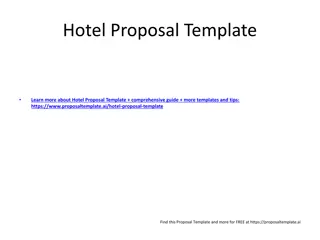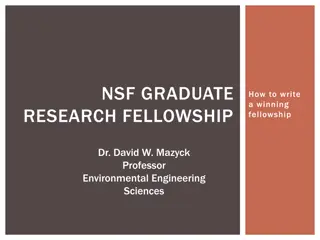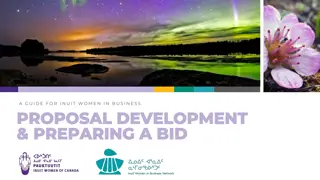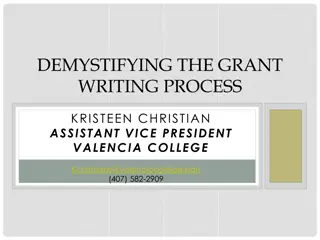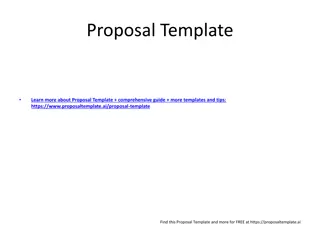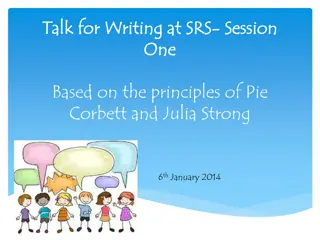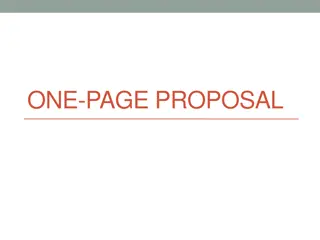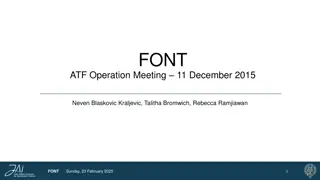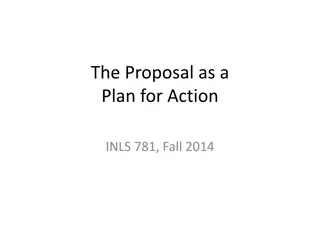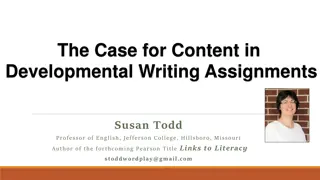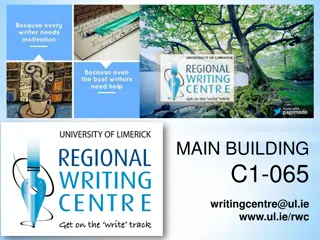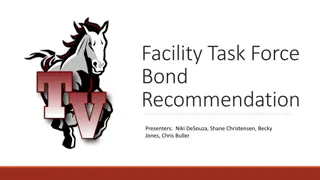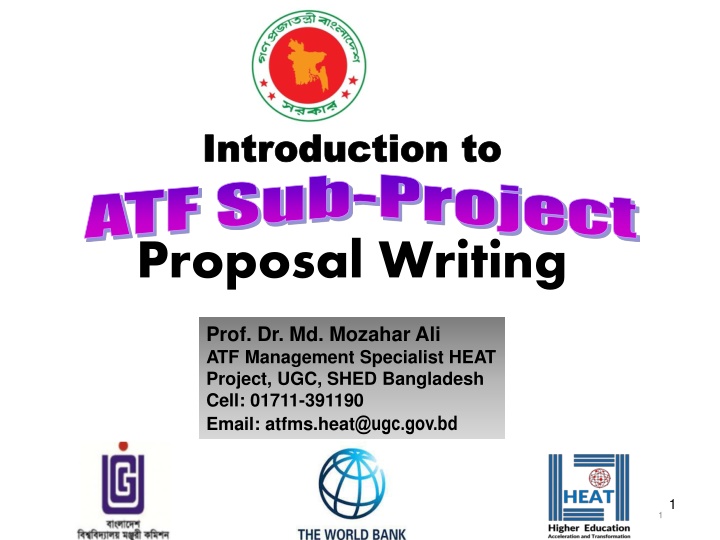
HEAT Project Workshop on ATF Sub-Project Proposal Writing
Join the HEAT Project workshop led by Prof. Dr. Md. Mozahar Ali to learn about ATF Sub-Project Proposal Writing, including details on HEAT Project components, Academic Transformation Fund (ATF), submission formats, and more. Get insights to enhance higher education in Bangladesh.
Download Presentation

Please find below an Image/Link to download the presentation.
The content on the website is provided AS IS for your information and personal use only. It may not be sold, licensed, or shared on other websites without obtaining consent from the author. If you encounter any issues during the download, it is possible that the publisher has removed the file from their server.
You are allowed to download the files provided on this website for personal or commercial use, subject to the condition that they are used lawfully. All files are the property of their respective owners.
The content on the website is provided AS IS for your information and personal use only. It may not be sold, licensed, or shared on other websites without obtaining consent from the author.
E N D
Presentation Transcript
Introduction to Sub-Project Proposal Writing Prof. Dr. Md. Mozahar Ali ATF Management Specialist HEAT Project, UGC, SHED Bangladesh Cell: 01711-391190 Email: atfms.heat@ugc.gov.bd 11
Objectives of this Workshop 1. Share information about: HEAT Project Academic Transformation Fund ATF Sub-project Proposal Writing Online submission of ATF SPP 2. Delegate responsibility of imparting training on ATF sub-project proposal writing at universities 2
Outline of Presentation 1. HEAT Project Components 2. HEAT Project Activities 3. Academic Transformation Fund (ATF) 4. ATF Windows 5. Sub-project Proposal Formats 6. Details of SP Proposal 7. Online submission of SPP 3
HEAT: Project Overview Project Title Higher Education Acceleration and Transformation(HEAT) Project Sponsoring Ministry/Division Secondary and Higher Education Division Implementing Agency University Grants Commission (UGC) of Bangladesh Project Implementation Period Date of Commencement Date of Completion IDA Credit Closing Estimated Cost: 401,657 : July 2023 : June 2028 : December 2027 4
HEAT: Main Components Total cost (in BDT IDA GoB Component Name and Sub-component Name Component 1: Component 1: Strengthening Regional and Global Partnerships in Higher Education Sub-Component 1.1: Institutionalization of Regional Mechanisms, Systemic Resilience, and Digital Connectivity Sub-Component 1.2: Regional Network of Women s Higher Education Institutions (in BDT Lac) (in BDT Lac) Lac) 76210.00 17714.00 17,714.00 - 58496.79 58496.79 - Total 76210.00 76210.00 5
HEAT: Main Components Component Name and Sub-component Name Component 2: Component 2: Transforming Higher Education In Bangladesh Sub-Component 2.1: Business Continuity under Covid-19 Sub-Component 2.2: Strengthening the Market Relevance of HE Programs in Bangladesh Sub-Component 2.3: Improving the Governance and Quality of the HE Sector IDA GoB Total cost (BDT Lac) (BDT Lac) (BDT Lac) 294357. 25 67468.00 17548.00 49920.00 184899.25 80883.75 104015.50 41990.00 15,375.00 26,615.00 Total 294357. 25 113806.75 180550.50 Component 3: Project Management, Results Monitoring, Communication and contingency 31090.34 6 Grand-Total 401657.31 198346.0 203311.0
HEAT: Major Activities Component 1: Component 1: Strengthening Regional and Global Partnerships in Higher Education International Partnership and Collaboration Student Exchange Programs Collaboration with NRENs through BdREN Development of an academic center at AUW Establish a network of women s universities and colleges in Bangladesh 7
HEAT: Major Activities Component 2: Component 2: Transforming Higher Education In Bangladesh Improving digital connectivity and infrastructure Develop National Learning Management Infrastructure (LMI) Upgrade the Bangladesh Research and Education Network (BdREN) Faculty Professional Development (FPD) Faculty Professional Development (FPD) Establish UTTA at rental premises and Train 5000 faculty members Competitive Competitive Grants Grants Research grants to promoting advanced research, innovation and entrepreneurship skills Project grants to improve teaching learning facilities Quality assurance and Accreditation Support the full operationalization of BAC Strengthening the operation of IQACs Performance based budgeting 8
2.2 Competitive Grants Academic Transformation Fund(ATF): Academic Transformation Fund(ATF): Normally accessed by recipients through a competitive mode competitive mode Proposal call -- Proposal submission -- Peer review-- Management approval Approved proposals Approved proposals become time bound SPP and are implemented through performance contracts Include budget and measurable outcome indicators ATF grants ATF grants are used to improve the quality of: Teaching-learning and research, Strengthen university linkages with industry aiming at commercialization of research outcome/products, etc. 9
Sub-component 2.2: Competitive Grants Schemes The Grants will be known as: Academic Transformation Fund (ATF) Academic Transformation Fund (ATF) ATF will have 5 Window 1:Pandemic Readiness Related Research and Development Window 2:Improvement of Teaching-Learning Infrastructure Window 3:Research Grants: (a) Advanced Research in Priority Areas (b) Collaborative Research with Industry Window 4:Establish Innovation Facilities (Fab Labs, i-Labs, Business incubators) Window 5:Establish Technology Transfer Office (TTO) 5 Windows Windows: 10
ATF Allocations to Five Windows ATF Allocations to Five Windows Allocation to Allocation to for this type SPP (upper SPP (lower Allocation individual individual Allocation W i n d o w (Tk. Lac) for the window 6000 6000 24200 24200 62960 ceiling) 100 50 ceiling) 500 500 W-1 Pandemic Res & Dev W-2: TL infrastructure W-3a: Adv. Research 3ai: STEM 3ai : AHSBL 3aii: Jun Res 3aiii: Climate Res W-3b: U-I Collab. Res W-4: Fab Lab FL Network W-5: TTO 38960 10000 10000 4000 200 50 600 100 Same as 3ai 20000 20000 5740 200 200 20 20 1000 600 100 100 5500 240 3500 3500 11
Group of Universities Group Number of Universities A 30 Name of Universities 1. DU, RU, BAU, BUET, CU, JU, SUST, JnU, NSU, DIU, KU, BRACU, IU, KUET, AIUB, BSMRSTU, HSTU, .. 30. Independent University, Bangladesh 1. IIUC, IUBAT, UIU, PUST, BSMRSTU, UAP, BRU, JKKNIU, CVASU, ULAB, . 30. KYAU B 30 1. BSMRSTU Pirojpur, BSMRMU, BAUST Saidpur, BSMRAAU, DIU, EU, BIU, EDU, AUB, .. 102. Queens University C 102 12
Eligible University and Entity Eligible University and Entity W i n d o w s: Win-1 Entity & University Group Pandemic Research Bio-science, Pharmacy and Social Science Depts. of Group A & B Universities All Departments/Institutes of eligible public Universities Departments/Institutes of all eligible Universities Departments/Institutes of all eligible Universities Group A Universities Group A Universities Win-2 Teaching-Learning Infrastructure Win-3a Advanced Research: Priority Areas Win-3b Advanced Research: Industry Collaboration Win-4 Establishing Fab Lab Win-5 Establishing TTO 13
Proposal Format Selection (6) (6) W i n d o w s: Win-1 SPP Format SPP Anx-1 i. COVID R&D-1: Biochemical/Virological ii. COVID R&D-2: Medical/Pharmaceutical iii. Social adaptation and Institutional readiness during/after pandemic Improvement of Teaching-Learning Infrastructure Win-3a Advanced Research Grants: Priority Areas Win-3b Advanced Research Grants: Industry Collaboration Win-4 Establishing Innovation Support Facilities Win-5 Establishing Technology Transfer Office Win-2 SPP Anx-2 SPP Anx-3a SPP Anx-3b SPP Anx-4 SPP Anx-5 14
Duration of ATF Sub-Projects Maximum duration: 1) Window 1 2) Window 2 3) Window 3 4) Window 4 5) Window 5 : : : : : 3 years 2 years 3 years 2 years 2 years In extreme circumstances, SP duration may be extended, but should be completed 06 months before the closing date of HEAT project. 15
Structure of ATF Sub-Project Proposal 1. Conceptual part Analysis of present status Identifying area and extent of Capacity Building Conceptualizing in terms of Objective (s) Activities, Outputs, and Outcome SWOT Analysis, Logframe 2. Implementation part Identifying major items of Expenditure Work Plan Training Plan Procurement Plan Budget Financing Plan 3. Monitoring part Milestones, Performance Indicators & Logframe 16
Characteristics of Development Proposals An objectively analyzed need assessment: SWOT Formulation of realistic objective(s) Identifying major activities and inputs A realistic Budget An unambiguous, time-bound Implementation plan Identifying Monitoring Instruments Identifying probable Risks and their management plan 17
Cluster of disciplines Cluster of disciplines for sub for sub- -projects: projects: 1. AHSS: (Arts, Humanities, Social Sciences)) 2. CCDM: (Climate Change and Disaster Management) 3. PCMSI: (Physics, Chemistry, Biology, Mathematics, Statistics, ICT) 4. ETTCLW: (Engineering, Technology, Textiles, Ceramic, Leather, Wood) 5. MBPPHNS: (Medical, Biochemical, Medical Physics, Pharmaceutical, Public Health and Nutritional Sciences) 6. AG: (Agriculture including Crops, Fisheries, Livestock, Veterinary, Poultry & Horticulture) 7. BL: (Business and Law) 18 18 18
Window 1: Pandemic Readiness Related Research and Development Indicative Activities: (i) Biochemical/Virological aspects of the virus, such as, genomics, origin, and mutation in human bodies, immune system, (ii) Medical and pharmaceutical research on pandemic causing viruses, antibodies, vaccines, drugs, etc. (iii) Social adaptation and Institutional readiness during/after pandemic. Eligible Entities: Bio-science, Pharmacy and Social Science Depts. of Group A & B Universities Budget Limit: :BDT. 100-500 Lac 19 19 19
Window 2: Improvement of Teaching-Learning Infrastructure Improving Infrastructure for Teaching-Learning: The funds from this window will finance: 1. Modern ICT systems for teaching and learning; 2. Upgrading of STEM labs; 3. Updating/modernizing curricula and teaching- learning materials; and 4. Upgradation/renovation of childcare facilities and ensuring campus safety for women. Eligible Entities All Depts./Institutes of eligible public Universities Budget Limit: BDT. 50-500 Lac 20 20 20
Window 3a(i): Advanced Research in Priority Areas STAGE/STEM disciplines: Smart agriculture, food safety, sustainable agriculture, smart textiles, computational biology, bio-medicines, biotechnology, poultry, fisheries and livestock, Veterinary, nanotechnologies and engineering, artificial intelligence, sustainable materials, ceramic, jute fabrics, biodegradable polymer, wood, metallurgy, and leather technologies, ship recycling, carbon emission, robotics and automation, etc. Eligible Entities: Departments/Institutes of all eligible Universities Budget Limit: :BDT. 200-600 Lac 21 21 21
Window 3a(i): Advanced Research in Priority Areas AHSBL disciplines: Economic, anthropological, sociological studies, globalization, production systems, livelihood pattern changes, rural and urban social transformation, ecosystem degradation impact on communities, migration, capital market, judicial and legal system, etc. Eligible Entities: Departments/Institutes of all eligible Universities Budget Limit: :BDT. 50-100 Lac 22 22 22
Window 3a: Advanced Research in Priority Areas Activities: (Same as 3a(i)) I. Research Projects lead by Junior Researchers II. Climate change Eligible Entities: Departments/Institutes of all eligible Universities Budget Limit: :BDT. 200-600 Lac 23 23 23
Window 3b: Collaborative Research with Industries and Research Institutes Activities: University-industry collaborative research targeting patenting and commercialization of research products. Eligible Entities: Departments/Institutes of all eligible Universities Budget Limit: :BDT. 200-1000 Lac 24 24 24
Window 4: Establishing Innovation Support Facilities SPP Type-1: Fab Labs, i-labs, Business incubators Activities: Establish new Fab Labs, i-labs, upgrading existing Fab labs, Business Incubation Centers tagged with Fab labs and i-Labs Eligible Entities: Group A Group A universities Budget Limit: :BDT. 200-600 Lac 25 25 25
Window 4: Establishing Innovation Support Facilities SPP Type-2: Networking with other Fab Labs Activities: Establish Fab Lab Bangladesh Network`, become member of Fab Lab Asia Network and Fab Foundation Group A Group A universities Eligible Entities: Budget Limit: :BDT. 20-100 Lac 26 26 26
Window 5: Establishing Technology Transfer Office Activities: Establishing new Technology Transfer Offices Eligible Entities: Budget Limit: Group A universities BDT. 20-100 Lac 27 27 27
PROJECT PROPOSAL C O M P O N E N T S 28
Proposal Components Proposal Components 1. Proposal title 2. Implementation Period 3. Total cost: BDT & US$ 4. General objectives 5. Specific objectives 6. Sub-project summary 7. Strategic Analysis 8. Background Data Substantiating the Strategic Analysis 9. Description of proposed field of research 29
Proposal Components Proposal Components 10. Table of Milestones (Annex-1) Table Performance Indicators (Annex-1) Table of Logical Framework (Annex-1) 11. Relevance 12. Benefits (Qualitative and Quantitative) 13. Operation & Maintenance of Equipment/ Instrument 14. Summary of Estimated Budget 15. Work/Activities Plan (Annex-2) 16. Financing Plan (Annex-3) 17. Procurement Plan (Annex-4: Tables A-E) 18. Training Plan (Annex-5) 30
Proposal Components Proposal Components 19. Detail Budget (Annex-6) 20. Technical assistance/consulting 21. Linkages/collaboration 22. Effect/impact of the sub-project 23. Sustainability 24. Environment Safety Checklist & Mitigation Plan (Annex-7) 25. Social Screening Form (Annex-8) 26. Experience in similar project 31
Proposal Title Informative, not creative Brief, precise, direct & comprehensive Reflect Reflect objectives objectives Should include all known keywords Institutional and project responsibilities should be well established Complete at the end of writing 32
Institutional information Institutional information Self-explanatory 33
General objectives Should reflect the title; Repeat keywords if possible Should be commensurate with vision, mission, goal of the University, entity State main problem addressed by the proposal State objectives referred to medium-term results and impact that the institution would like to achieve Single Sentence 34
Specific objectives Should support the General Objectives Several specific objectives against one General objective Identified and numbered Clear and Specific Measurable, not necessarily quantified Achievableduring lifetime of the project but outreach beyond Relevant in the local context Should allow periodic M&E 35
Proposal Summary 250 words for SPP A first concise view of the proposal Follow logical framework approach a. Goal & Purpose General Objectives b. Purpose & Output Specific Objective Expected Result Outcome c. Output & Input Activities, Methods etc. Item-wise paragrapgh captions 36
Strategic Analysis (SWOT) Strategic Analysis (SWOT) Strength Weakness Internal Opportunities Threat External 37
Strategic Analysis -Basically SWOT analysis -Should clearly indicate that all categories of stakeholders participated in the exercise -Both internal (strength & weaknesses) and external (opportunities & threats) factors should be analyzed & highlighted - Link SWOT results with: objective, activity, outcome, performance indicator 38
Background Data Background Data -Should link the background data with SWOT (S & W part) -Should generate extra relevant information along with the given questions -Data should relate to the sub-project issues -Some quantitative facts about the entity -Some important items not to be omitted: Basic academic indicators (input, output, outcomes); physical facilities, institutional tendencies Note: SWOT analysis & background data should be related 39
Project Indicators Level 1. Milestones Describe progress in sub-project implementation Expressed in terms of critical activities/outcome Level 2. Performance indicators key variables that affect beneficiaries Refer to Annex-2 of ATFOM Logical Framework Essential for M&E, measurement of achievement of results, effectivness in resource s use and improvement of project design. 40
Milestones Milestones(Level (Level 1) 1) Achievementof critical activities / Results Only critical activities & critical results Activity-Result relation should be well visible and self explanatory Should indicate a new level in implementation Must be objectively verifyable Relate to Work plan, Procurement plan, Financing plan 41
Performance Indicators(level 2) (level 2) Relation between milestones & performance indicators, log frame Log-frame: Input Output Purpose Goal Performance IndicatorMilestone -May be within the SPP period, some may go beyond -May be quantitative and qualitative (but verifiable) -Assumptions should be realistic -Verification methods clear, operational -Refer to general objective, specific objectives, benefits, University characteristics etc. 42
Table of Milestones Table of Milestones(example from HEAT) Milestone Specific Objective Critical activities Verification method Assumption ATFOM published Teaching learning, research Manuscript printing contract Physical, Record Sufficient no. of tenders ATF started -Do- Proposal call evaluation contract sign List of sub- projects All time schedule maintained BDREN first phase High speed Internet Design Fiber laying NOC creation Physical No administrative hindrance Univ. coop-n 43
Table of PI Table of PI (example from HEAT) Indica -tor Specific objective Cal. meth od % Assump- tion Verif. method Cal. base value % Base value 2024 **** Desire d value 2026 **** Devt. of new curricul um Teaching- learning Academic Council Approval M&E report Student access to Internet High speed Internet % Sufficient internal connec- tivity Survey % **** **** 44
Relevance Relevance Explicit: University & Entity relevance (eg. Agri Univ. projects should be agri related) Regional relevance National relevance Relate to sub-project activities, specific objective, SWOT results 45
Benefits Benefits(qualitative and quantitative) Be imaginative but objective Direct and indirect benefit Relate to general objective, specific objective Relate to performance indicators Some examples Better R&D infrastructure and capacity Wider PhD disciplinary coverage, enrolment and graduation Higher research outputs, productivity and international linkages 46
Operation Operation and of of equipment equipment and and Maintenance Maintenance and instruments instruments Institutional capacity in operation and maintenance of equipment and instruments that will be used in the project: In-house preventive maintenance In-house servicing Repair parts Externaly procured servicing 47
Budget Budget(Aggregate and Detail) Detail and aggregate are structurally related Detail first and Aggregate will follow Employ New Economic Code (7-digit; SPP Annex-3) Prepare in Excel Sheet Prepare in Excel Sheet Comply ceiling and rates e.g. SPM team incentive, Consultant hire, Renovation, etc. Ph.D., MPhil scholarship, Training, Collaboration, Foreign visit, etc. 48
Eligible and Non-Eligible Expenditure A. Indicative Eligible Expenditure (Art-2.7) Training of permanent academic staff (all Windows) Teaching aids-materials (W-2) Equipment/ stationeries (all Windows) Local conference/seminar/workshops (all Windows) Research support to Masters/MPhil./PhD (W-3) Financial support to research students (W-3) Research stay abroad (Fellows & host) (W-3) Academic collaboration visit (all Windows) 49
Eligible and Non-Eligible Expenditure B. Ineligible Expenditure (Art.-2.7.7) Salary and allowances for permanent staff Any establishment/recurring/revenue expenditures of the entities Large civil works (exceeding 10% of total sub project cost) Expenditure not included in the sub project work/financing/procurement plans and budget 50



